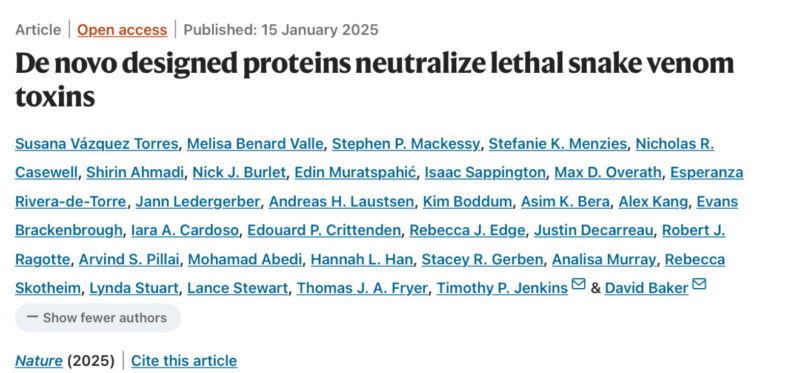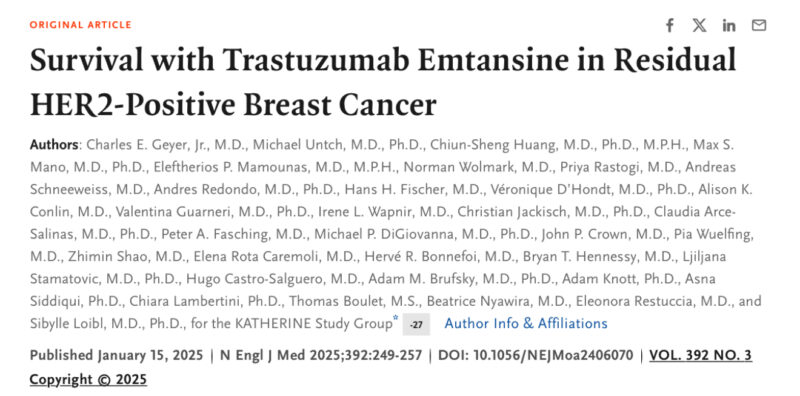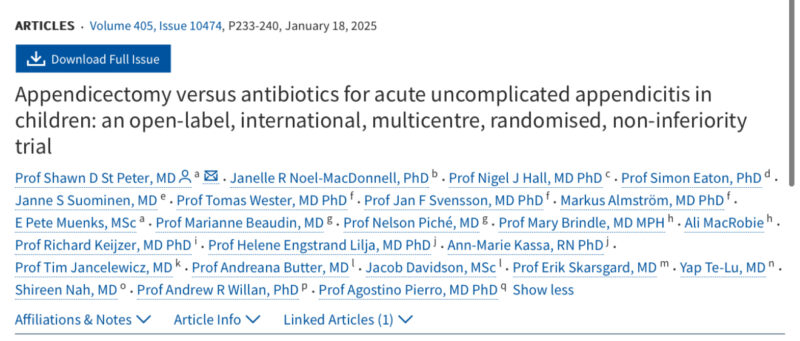Samuel Hume, Fellow at The Foulkes Foundation and pursuing PhD in the University of Oxford’s Department of Oncology, shared a post on X:
“Top 5 advances in medicine this week
1. AI-designed snake anti-venoms
These inhibit the ‘three-finger toxins’ that make the venom of snakes like cobras and mambas lethal – cheaper, with higher affinity and more scalability than current therapies.
De novo designed proteins neutralize lethal snake venom toxins
Authors: Susana Vázquez Torres et al.

2. Increasing overall survival in early, residual HER2-positive breast cancer
Trastuzumab Emtansine (T-DM1) combines a HER2 antibody (Trastuzumab) with an anti-microtubule agent (Emtansine) to specifically deliver Emtansine to HER2-positive cells
Compared to HER2 antibody alone, T-DM1 increased overall survival in patients with HER2-positive breast cancer and residual disease after neoadjuvant therapy + surgery (which represents about 50% of patients with early HER2-positive breast cancer)
There were more adverse events, too – mainly neurological and hepatobiliary
Survival with Trastuzumab Emtansine in Residual HER2-Positive Breast Cancer
Authors: Charles E. Geyer et al.

3. Huntington’s disease progresses through 4 defined stages
Phase A: Slow expansion of the CAG repeat in the huntingtin (HTT) gene
Phase B: Rapid expansion of the CAG repeat, triggered at ~80 CAG repeats
Phase C: Widespread gene dysregulation, triggered at ~150 CAG repeats
Phase D: De-repression of silent genes (like apoptosis genes), leading to the specific death of striatal projection neurons
Long somatic DNA-repeat expansion drives neurodegeneration in Huntington’s disease
Authors: Robert E. Handsaker et al.

4. The first large, randomised trial for antibiotics vs. surgery for appendicitis in children
(Even though the first described operation was in 1886!)
Surgery had a much lower rate of failure (defined as normal appendix on pathology) than antibiotics (defined as a later requirement for surgery)
Authors: Shawn D St Peter et al.

5. Increasing lifespan (in mice!) by reversing senescence with an miRNA
miR-302b depletes the senescence genes, p21 and cyclin G2, so releases cells from senescence
In middle-old aged mice (20 months of age), systemic treatment with miR-302b – delivered via exosomes – increased lifespan, with better physical and cognitive health in old age
p21 and cyclin G2 are tumour suppressors, so this is a cancer risk – there was no increased tumourigenesis here, but this is probably more interesting as proof-of-concept than as potential therapy
Targeted delivery to senescent cells – maybe through surface markers – might be a safer, more promising approach
Exosomal miR-302b rejuvenates aging mice by reversing the proliferative arrest of senescent cells
Authors: Youkun Bi et al.

Thank you for reading! Let me know if I’ve missed anything.”
